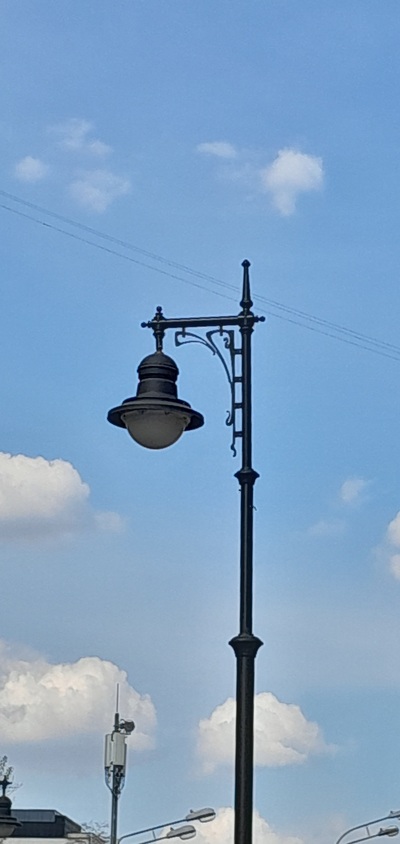
Writing one of the previous posts, on creating the curriculum for pre-schoolers, and I compared the pre-school EFL on the pre-A level to an ocean. It is huge, it is surprising and it is uncharted. It is!
At the same time, while travelling across it, to the first beacons of the A1 level, you can and you will come across those buoys that help you understand that yes, you are making progress and moving forward.
Today, I would like to look at these five important posts that we arrive at in our journey across the curriculum of the VYL English learning. Disclaimer: it is a very personal list and it might be getting extended, changed or removed with time.

One: We start producing sentences
All the learning in pre-school starts with single words, our first hello (although this is a proper sentence), our first blue, green, yellow and pink and our one, two, three, four, five. When that happens, it is Christmas, Easter and birthday put together. I love the start of the course and I spend these first few weeks in awe, observing how my little students venture out into a new territory and how they learn how to navigate it and how to enjoy it. Some of them run into it and embrace it from the word go, some of them are a bit apprehensive and they slowly warm up to it. I take a lot of pleasure in helping them do it and in supporting them on the way.
However, that is just the first step, something that needs to happen and something that the course needs to move on from, to the real first aim and that is: phrases and sentences! These can be very simple and their range might remain narrow for a long time, limited to ‘it is’, ‘I like’, ‘I can’, ‘I’ve got’ but they can be introduced, developed, practised and used from early on. Among all the contributing factors there are: the teacher creating the appropriate exposure by using full sentences while introducing and drilling new vocabulary (‘It’s a dog’, instead of ‘a dog’), introducing structures, supporting the use of the structures with gestures or visuals, encouraging the kids to use full sentences, introducing and using the functional language chunks.
Sooner or later, the kids will develop the habit of using full sentences and they will be doing it more frequently, although, of course, that does not mean that they will only use full sentences because, in their real, L1 life, kids also respond in single words sometimes!

Two: We start producing langauge spontaneously
Let’s imagine this moment: you have covered a few units or modules, your little students already have some vocabulary, they feel comfortable in the classroom and they have even started to use some simple structures. It is going well. The next step might be to focus on creating conditions that would favour some spontaneous language production in order to ensure that children communicate not only with the teacher and not only when prompted by the teacher but when they have something to say and something to share.
The activities that foster this freer communication include: letting children lead activities, setting up pairwork and allowing students communicate to other students, not only the teacher, showing children that the language can be played with and creating opportunities for that with, for example changing and creating own versions of stories or songs and, in general, being creative in English, for example our own version of ‘Do you like broccoli ice-cream?’, deciding what five questions thay may want to ask starting with ‘What’s your favourite…?’ or even by giving commands to the class during the Abracadabra game (‘Abracadabra, 1, 2, 3. You are…’). One of the most powerful questions that can be used in class is ‘Who’s got an idea?’ this way inviting students to take part in shaping up the games and, effectively, the lesson.

Three: We start using a variety of communication strategies
This is the one that I was unaware of for a very very long time and only during the first term of my MA programme, while going through piles of articles and publications in search of something that I might get interested in, I found the idea of communication strategies. This is a fascinating topic anyway, for me as a teacher and for me as a speaker of foreign languages but it turned out to be even more amazing because I decided to check whether my little students use any of those or, more specifically, any more than initially claimed, namely – do the little kids do something else than just refering to their first langauage. And yes, they do!
I still need to publish the outcomes of this research in any way but here I would like to highlight only all these instances of the pre-school students trying to deal with the communication breakdowns and in the way they do it because, in my opinion, it does show that kids become language learners and langauge users, taking control and trying to deal with the situation. The most common go-to solution is falling back on their L1 but there are many many more such as approximation (using a word that is similar enough and may do the job effectively), repeating, self-correction, using gestures to clarify. According to the findings of my small scale research done as part of the MA programme mentioned above (small scale as it was), even those very young beginner students are capable of using some of those strategies, showing that they are becoming aware of the learning process and their place in it.
Among the activities that can help foster and promote the use of communication strategies, there are the use of gesture as part of instructions and new language presentation and practice (to include some alternative, easier communication channels), using riddles in class (to get the kids used to describing objects) as well as modelling repetition or self-correction, to name a few.

Four: We start reading
A large part of the story in the EFL pre-school happens without any written word, unless you count the random words of instructions in the coursebook or the words at the back of some of the flashcards or the letters in the storybooks that we do not really pay any attention to in any active way. Many of the preschool EFL students are too young to start learning to read and write in English as the instruction can start as early as 3. What is more, the curriculum in some of the countries is organised in such a way that the literacy component is purposefully excluded from pre-school and the early years of primary in order to interfere with the literacy skills development in the kids’ L1 and not to overburden the students.
However, since the EFL world encompasses many countries and many teaching contexts and formats, there are out there the pre-primary that include some literacy skills development and there are some pre-school kids who start reading and writing in English.
In the context in which I am working at the moment (pre-primary EFL, 2 academic hours per week or 2 real hours a week), we start introducing some elements of literacy in the second year of the EFL instruction and / or when the kids are older than 5. The first steps involve: introduction of the alphabet, revising the vocabulary according to the alphabet / phonics, simple blending and the CVC words as well as some elements of the sight words and creating the written English exposure in the classroom.

Five: We start learning grammar
The pre-primary EFL world is a fascinating place to be and the element of grammar (or structure) in it is one more piece of evidence.
Traditionally, the pre-primary coursebooks focus on the introduction and practice of vocabulary and not structure. On the one hand, such an approach seems to be justified – the students are very young and the explicit grammar presentations are the last thing that they need or are able to deal with. On the other hand, however, learning a language is not about reproducing lists of words, organised thematically into colours, pets and fruit and ‘structure’ must be introduced in order to enable the kids to communicate in a natural way, even if only as the beginner learners.
It does not require any serious change of materials or any extensive supplementing because even if the coursebook itself does not include any structures, these can easily be added, practised and used. Naturally, the way in this is done needs to be different from the traditional explicit grammar presentation. Other methods have to be found and I have already written about my favourite in an article for the Modern English Teacher in May 2022. The article is only available if you have a subscription but MET recorded two related videos which have been made public and can be found on youtube. Make sure you check out one of the earlier posts here.

Coda
These are my five milestones in the pre-primary EFL world and, at the same time, my top 5 favourite moments to be a part of. There are no certain times or days schedules for them, they happen when the kids are ready
So far, there are five. If you have anything to add to that list, please do so in the comments section below!
Happy teaching!